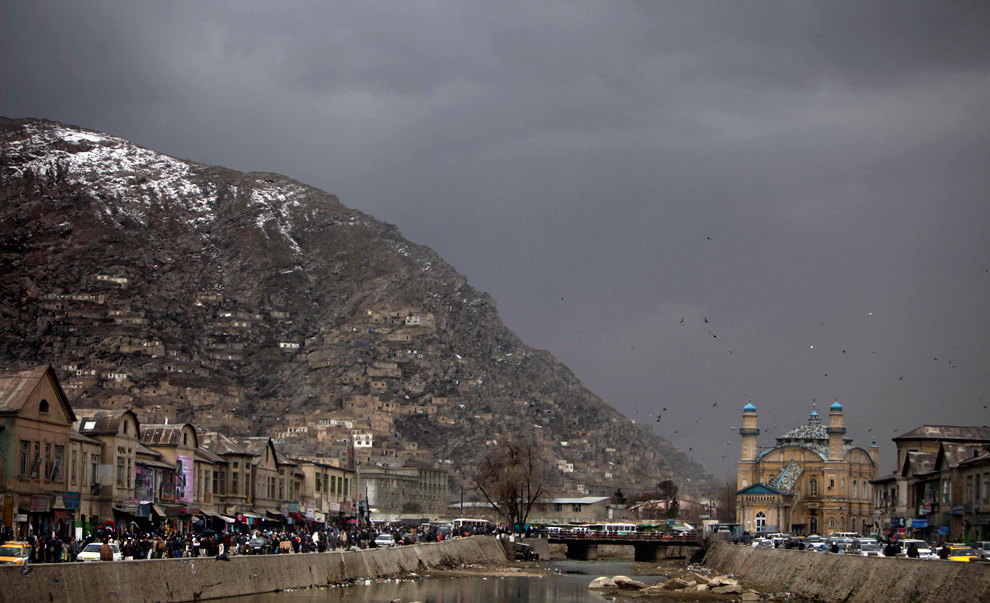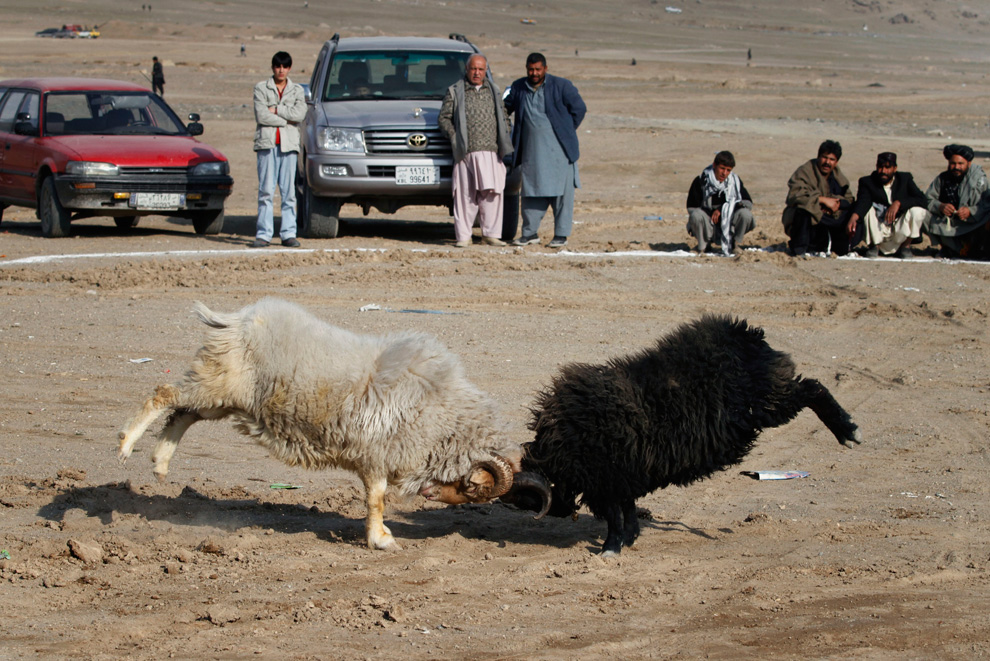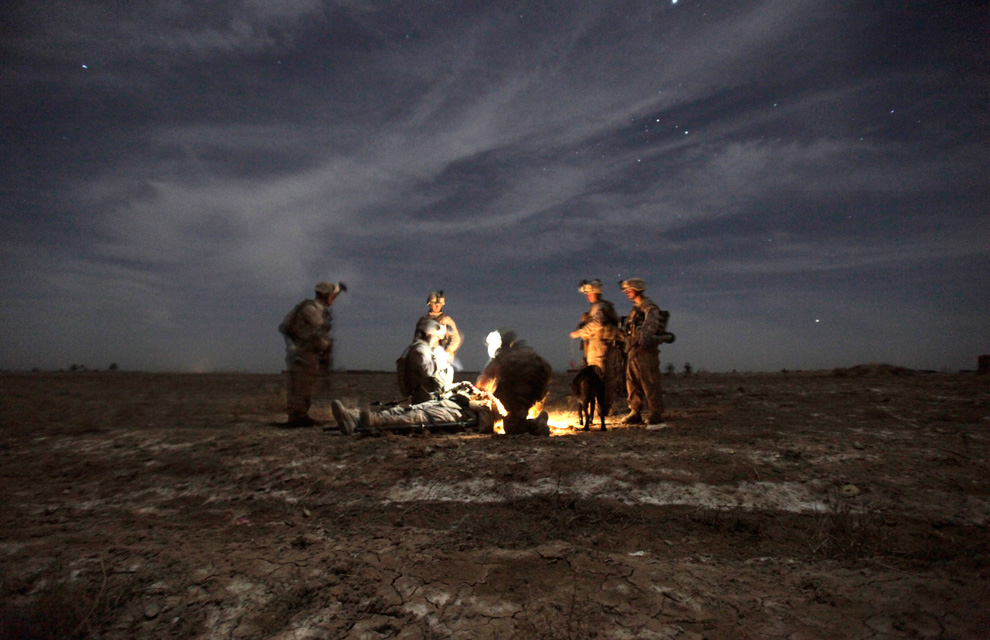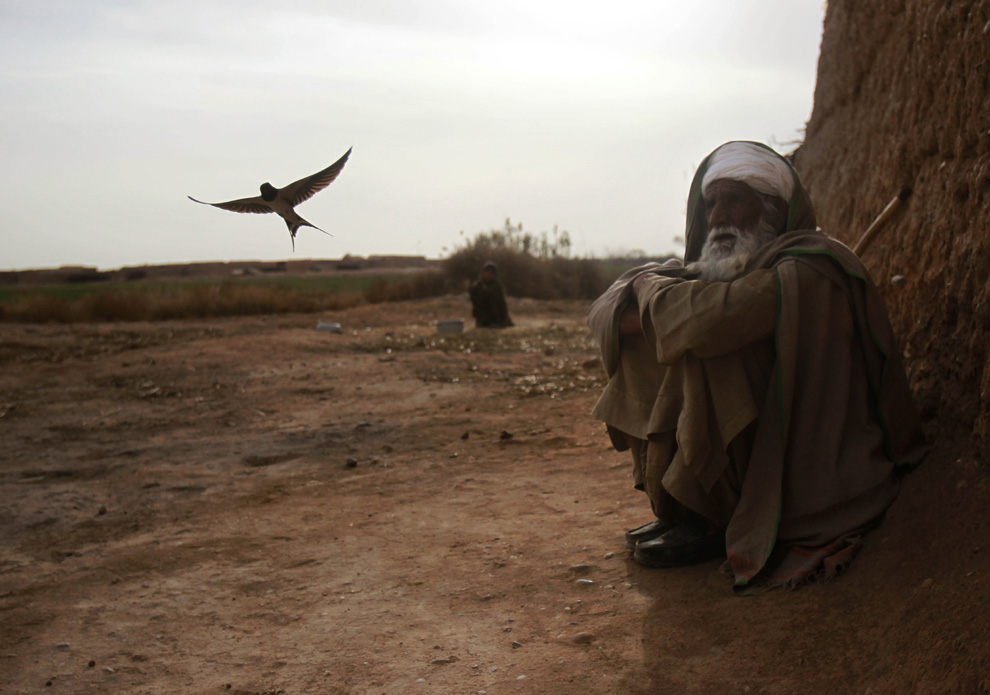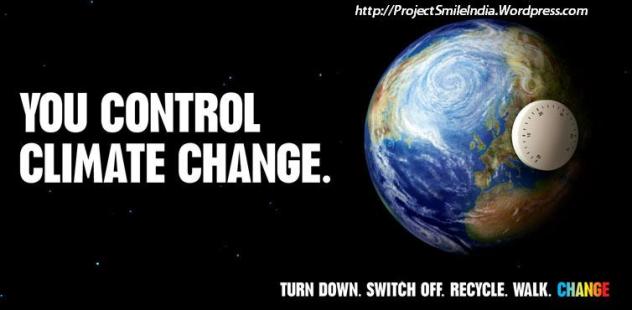Given the complexity of global warming, waiting for an effective international “solution” to the problem is not feasible. It would be better to adopt a multi-scale approach to addressing climate change, starting at the local level, argues Elinor Ostrom.
27th February 2010
No country can solve the global climate change problem by acting alone. If only one country in the world tried to solve climate change—even one of the wealthier countries of the world—this would be a grossly inadequate effort. On the other hand, waiting for a single worldwide “solution” to emerge from global negotiations is problematic. Considerable disagreements exist even among the major states as to how large a reduction in emissions is required,[1] as witnessed in the December 2009 negotiations in Copenhagen.
Major debates exist over a number of key issues related to achieving efficient and fair mechanisms at a global level. Who is responsible for the current and immediate future levels of carbon dioxide (CO2) in the atmosphere? [2][3][4] Who should bear the primary burden of paying for solutions? [5][6][7] And could the various “remedies” proposed to reduce carbon sequestration actually help solve other environmental concerns? One puzzle is related to whether deforestation contributes to climate change primarily through the release of CO2 to the atmosphere or whether changes in land cover, evapotranspiration, and cloud cover are as important and must be taken into account when planning afforestation efforts.[8] Similarly, scholarly concerns have been raised about claims that Payments for Ecosystem Services (PES) can jointly increase carbon sequestration and enhance species conservation on the same landscape.[9]
Given the decades-long failure at an international level to reach agreement on efficient, fair, and enforceable reductions of greenhouse gas emissions, continuing to wait may lead to missing the chance to make significant adaptations and mitigations in time to prevent tragic disasters. There has been too much focus on achieving a given reduction of greenhouse gas emissions rather than recognizing the grave risk we face. Reducing emissions now is more urgent than reaching an international agreement to reduce emissions by a given percentage, which might not be achieved for some time into the future. We do not face a situation where little harm is caused by overuse until we pass a given threshold, as may be the case with some renewable resources. Further, given the importance of technological change, without numerous innovative technological and institutional efforts at multiple scales, we may not even begin to learn which combined sets of actions are the most effective in reducing the long-term threat of massive climate change.
In addition to the problem of waiting too long, solutions negotiated at a global level, if not backed up by a variety of efforts at national, regional, and local levels, are not guaranteed to work well. While the level of CO2 and other greenhouse gases in the atmosphere may be relatively uniformly distributed at a mega-scale, the impacts of climate change differentially affect regions depending on their geographic location, ecological and economic conditions, prior preparation for extreme events, and past investments. The people most hurt by impacts may not have adequate representation at higher levels and may be unable to articulate clear ways to reduce greenhouse gas emissions and help them adapt to the variety of threats they face.[10]
We need to recognize that while many of the effects of climate change are global, the causes of climate change operate at a much smaller scale. The familiar slogan “Think Globally, Act Locally” hits right on a major dilemma facing all inhabitants of this planet. To solve climate change in the long run, the day-to-day activities of individuals, families, firms, communities, and governments at multiple levels—particularly those in the more developed world—will need to change substantially. Studies now demonstrate that actions taken even at a family level can make a substantial difference.[11][12][13] If a family changes its fundamental behavior relating to home insulation, carpooling, and the purchase of fuel-efficient cars, these actions taken at a small scale would cumulatively reduce their greenhouse gas emissions and their energy consumption by around 30 percent.[14]
Billions of actors affect the global atmosphere. Everyone will benefit from reduced greenhouse gas emissions, whether they make any effort toward this goal or not. Trying to solve the problem of providing a public good is thus a classic collective action dilemma—and potentially the largest dilemma the world has ever knowingly faced. The classic theory of collective action predicts that no one will change behavior and reduce their energy use unless an external authority imposes enforceable rules that change the incentives faced by those involved. This is why many analysts call for a change in institutions at the global level.[15][16][17] Given the presumption that a collective action problem that has global effects must be “solved” globally, several questions need to be addressed as analysts undertake the next round of research on climate change:
Is the conventional theory of collective action the best theory for analyzing how to reduce the threats of massive climate change?
If not, what key assumptions need to change with regard to (a) the basic theory and (b) the assumptions made regarding the scale of effects produced by actions taken at less-than-global levels?
Are only global benefits generated from local efforts to reduce greenhouse gas emissions, or are there potential benefits at multiple scales?
Are actions being taken at less-than-global scales to reduce greenhouse gas emissions, or at least to offer some levels of adaptation?
Are large-scale governments usually better equipped to cope with collective action problems that have large-scale outcomes?
This paper addresses these questions in turn.
The Conventional Theory of Collective Action
The terms “social dilemma” or “social trap” refer to settings where uncoordinated decisions motivated by the pursuit of individual benefits generate suboptimal payoffs for others and for the self in the long run. Individual maximization of short-term benefits to self leads individuals to take actions that generate lower joint outcomes than could have been achieved. The socially optimal outcome could be achieved if most of those involved “cooperated,” but no one is independently motivated to change his choice, given the predicted choices that others will make.[18][19][20][21]
In the case of climate change, we all benefit from reduction of greenhouse gas emissions. The joint goal is reducing the threats of massive climate change—increased ocean levels, increased variability in climate patterns, and many other global bads. Without externally imposed regulations, the earlier theory of collective action predicts that the benefits that might be achieved are impossible to obtain. In the conventional theory, “self-organized groups” that have devised their own policies to achieve a public good or regulate a common-pool resource do not exist at any scale. The applicability of the conventional theory is considered to be so obvious by many scholars that few questions have been raised about whether this is the best theoretical foundation for making real progress toward substantially reducing greenhouse gas emissions and taking other actions to reduce the threat of massive harm brought about by climate change.
However, two major grounds exist for doubting whether sole reliance on the conventional theory of collective action as a foundation for thinking about global change is a wise scientific strategy. The first is the weakness in empirical support for the conventional theory of collective action related to small to medium-size environmental social dilemmas. The second is the existence of multiple externalities at small, medium, and large scales within the global externality that has been of primary concern in the academic and policy literature.
The Weakness of Empirical Support
In a major, book-length effort, Poteete, Janssen, and Ostrom[22] examine evidence derived from multiple methods to examine whether there is strong empirical support for the theory of collective action. While many instances of free-riding are observed in the array of empirical research, a surprisingly large number of individuals facing collective action problems do cooperate. Contrary to the conventional theory, many groups in the field have self-organized to develop solutions to common-pool resource problems at a small to medium scale.[23][24][25][26][27][28][29][30][31][32][33][34][35]
A large number of variables increase the likelihood that self-organization could be effective in solving collective action problems. Among the most important are the following: (1) reliable information is available about the immediate and long-term costs and benefits of actions; (2) the individuals involved see the common resource as important for their own achievements and have a long-term time horizon; (3) gaining a reputation for being a trustworthy reciprocator is important to those involved; (4) individuals can communicate with at least some of the others involved; (5) informal monitoring and sanctioning is feasible and considered appropriate; and (6) social capital and leadership exist, related to previous successes in solving joint problems.
The exact structure that will enhance cooperation cannot be specified at a general level, as many specific features of a particular dilemma affect what has a chance of working. The crucial factor is that a combination of structural features leads many of those affected to trust one another and to be willing to do an agreed-upon action that adds to their own short-term costs because they do see a long-term benefit for themselves and others and they believe that most others are complying.
The problem of collective action does not disappear once a policy to deal with an externality is made by a government. Even governmental policies need to rely to a great extent on willing cooperation by citizens. When citizens approve of a governmental policy, think that they should comply, and this view is complemented by a sense that the governmental policy is effectively and fairly enforced, the costs of that enforcement are much lower than when citizens try to evade the policy. Trust that governmental officials are objective, effective, and fair is more important in enabling a governmental policy to work than reliance on force.[36][37]
The Existence of Multiple Externalities
It is obviously much easier to craft solutions for collective action problems related to smaller-scale common-pool resources than for those related to the global commons. Many of the policy analyses recommending “solutions” at an international level to be implemented by national governments are based on a fear that unless global solutions are made for global problems, these problems will continue unabated. The third major question addressed above is: “Are only global benefits generated from local-level efforts to reduce greenhouse gas emissions, or are there potential benefits at multiple scales?” Decisions within a family as to what form of transportation to use for various purposes, how to insulate the home, and which investments to make for power consumption within the home all have small (but cumulatively important) effects on the global atmosphere. Similar decisions within firms are also important, as buildings in general account for more than 70 percent of the electricity use and almost 40 percent of greenhouse gas emissions in the United States.[38]
Communities that have established power networks that enable households to invest in solar power that is used for household energy—and when not needed, contributes to the network—can potentially reduce local energy costs as well as greenhouse gas emissions. Investments in better waste disposal facilities also generate local benefits as well as helping reduce global emissions. Efforts to reduce pollution levels in large metropolitan areas focus both on total energy use and on emissions of particulates and thus generate benefits at a metropolitan level as well as globally. Decisions to reduce subsidies to various types of economic development that increase emissions are difficult for any government to make, but some of these decisions can reduce the administrative costs of government as well as improve the environment.
Are Large-Scale Governments Usually Better Able to Cope with Collective Action?
While many policy discussions lead to the perspective that global solutions are necessary for coping with the problems of climate change because of the inadequacy of local and regional efforts, few of these analyses examine the problems that large-scale units may face in developing effective policies related to resources. Before deciding that the global level is the only appropriate scale on which to address climate change, one should at least reflect on past efforts to adopt uniform policies by very large entities—efforts intended to correct for problems of collective action. The presumption that locals cannot take care of public-sector problems has led to diverse policies to place responsibility for local public services on units of government that are very large, frequently lacking the resources to carry out their assignments, and overwhelmed with what they are assigned to do.
Contemporary assignments to regional, national, or international governments of the exclusive responsibility for providing local public goods and common-pool resources remove authority from local officials and citizens to solve local problems that vary from one location to the next. The United Nations Conference on the Law of the Sea allocated about one-third of what had been considered “international ocean” to individual nations because of the inability of international authorities to effectively regulate ocean fisheries.[39] Exclusive Economic Zones (EEZs) were created that extend 200 nautical miles from the coast, and full sovereign powers were granted to these states to manage coastal fisheries so that they are not overexploited. Instead of reducing overharvesting, however, many national governments subsidized the expansion of fishing fleets that increased the demand on coastal fisheries and placed more fishing areas in danger of overexploitation.[40] The models of fishery dynamics used by national governments tended to be relatively crude and led to inaccurate assessment of fishery stocks.[41]
The Department of Fisheries and Oceans in Canada, for example, developed a model of stock regeneration for northern cod that scientists later found to be flawed.[42] Local cod fishers in Newfoundland raised serious questions in the late 1980s and predicted a near-term collapse, but the Canadian government refused to listen and assured doubters that its model was correct. In 1992, however, the cod stock collapsed and the Canadian government declared a moratorium on all fishing in Canadian waters. This has generated very substantial costs for local fishing villages dependent upon that stock, which they had earlier managed relatively effectively.[43][44] Thus the capability of large-scale units to make better scientific judgments and implement them has not been fully realized with regard to ocean fisheries which, while not global in scope, are larger than most territorially-based resources.
Describing the problematic policies of large-scale governmental units related to climate change and other environmental issues is not meant to challenge the need for global policies related to climate change. The intent is to balance the heavy focus in policy literature on the need for global solutions as the primary strategy for coping with climate change. Extensive research on institutions related to environmental policies has repeatedly shown that creative, effective, and efficient policies, as well as disasters, have been implemented at all scales. Dealing with the complexity of environmental problems can lead to “negative learning” by scientists and policy makers at all scales.[45] Reliance on a single “solution” may in fact result in more of a problem than a solution.[46] It is important that we recognize that devising policies related to complex environmental processes is a grand challenge and that reliance on one scale to solve these problems is naïve.
What Are We Learning?
Debating whether local and national efforts to reduce greenhouse gas emissions undermine global efforts or whether global efforts generate net costs rather than net benefits produces a lot of hot air, but not necessarily better solutions. It is essential that we recognize (1) the complexity of causes of climate change, (2) the challenge of acquiring knowledge about causes and effects in a world that is changing rapidly, (3) the wide diversity of policies that can lead to reduced emissions but might also enable opportunistic efforts to obtain a flow of funds by appearing to reduce emissions while not having a real impact or, worse, effectively increasing rather than decreasing emissions, (4) the opportunities that major sources of funding open up for policy experiments if funds are also allocated to monitoring and evaluation of the benefits and costs of the experiments, and (5) that policies adopted at any scale can generate errors but that without trial and error, learning cannot occur.
Acknowledging the complexity of the problem, as well as the relatively recent agreement among scientists about the multiple, local-level causes of climate change, leads to recognition that waiting for effective policies to be established at the global level is unreasonable. Instead of focusing on a global-scale effort, a multi-scale approach to the problem of climate change would be more effective and encourage experimentation and learning. Let us turn to a more detailed discussion of what a multi-scale approach means.
A Multi-Scale Approach to Solutions
As discussed above, instead of the benefits derived from reducing greenhouse gases existing only at the global level, multiple benefits are created by diverse actions at multiple scales. Potential benefits are even generated at a household level: members of a household who bike rather than drive to work achieve better health. Expenditures on heating and electricity may be reduced when investments are made in better construction of buildings, reconstruction of existing buildings, installation of solar panels, and many other efforts that families as well as private firms can make that pay off in the long run.
Furthermore, extensive empirical research on collective action discussed above has repeatedly identified a necessary central core of trust and reciprocity among those involved that is associated with successful levels of collective action. If the only policy related to climate change was adopted at the global scale, it would be particularly difficult to increase the trust that citizens and firms need to have that other citizens and firms located halfway around the globe are taking actions similar to those being taken “at home.” When participants fear they are being “suckers” for taking costly actions while others enjoy a free ride, more substantial effort is devoted to finding deceptive ways of appearing to reduce emissions while not actually doing so. A key problem is monitoring.
Diverse Monitoring Strategies
Relying only on preexisting levels of trust and reciprocity among those involved in collective action is not associated with long-term success. This is especially the case when new problems arise that groups have not previously faced. Rules must be enforced in some manner to achieve sustainable systems, but the question of how rules will actually be enforced is frequently ignored when a reform is proposed. Our current research on resource regimes is highly relevant.[47][48][49][50] In efforts to enhance another large-scale collective good—biodiversity—all too many “comanaged paper parks” have been drafted in the home office of an overseas donor or even in a country’s capital city, only to be destroyed by illegal harvesting in the specified territory. While many agree that rule enforcement is necessary for creating a sustainable resource over time, considerable disagreement exists about who should monitor the rules.[51][52] Simply employing a few guards who do not know the terrain or the people living in an area has not been a successful strategy.
Most long-surviving resource regimes select some of their own monitors, who are accountable to the appropriators or are appropriators themselves, to keep an eye on resource conditions as well as on harvesting activities. By creating official positions for local monitors, a resource regime does not have to rely only on local community norms to sanction a rule breaker. The community creates an official position. In some systems, users rotate into this position so that everyone takes on the role of monitor. In other systems, all participants contribute resources, and they jointly hire monitors.
In a study of the conditions of forests used by 178 forest user groups located in twelve countries studied by the International Forestry Resources and Institutions (IFRI) research network, Gibson, Williams, and Ostrom[53] found that the level of local monitoring varied substantially across groups. One of the measures obtained in this study was the frequency with which a local group monitors and sanctions rule-breaking behavior in the forest. We examined the impact of this variable on appropriators’ assessment of forest conditions (as well as on a forester’s assessment). We also examined the impact of a group’s social capital, the group’s dependence on forest resources, and whether the group was formally organized or not. The result of the analysis was that regular monitoring by a local group is more important than the other three variables in enhancing forest conditions. Regardless of the levels of social capital, forest dependence, and formal organization, regular monitoring and sanctioning are strongly and statistically associated with better forest conditions.[54][50][49]
Some local utilities in the United States are now seeking to reduce energy consumption by developing local monitoring systems whose results are then reported on the bills that customers receive. The Sacramento Municipal Utility District, for example, has tried various techniques, including rebates for energy-saving appliances, but recently found a more effective technique. In April 2008, it began sending out statements to 35,000 randomly-selected customers, rating them according to their energy use compared with that of neighbors in 100 homes of similar size that used the same heating fuel. The customers were also compared with 20 neighbors who were especially efficient in saving energy, receiving one or two smiley face symbols on their monthly statement, depending on how high their conservation score was.[55]
After six months, the utility company found “that customers who received the personalized report reduced energy use by 2 percent more than those who got standard statements.”[55] Using various forms of competition among households and groups and feedback on who is doing the best at reducing energy use is a strategy for reducing emissions that is increasingly being adopted by college campuses, small cities, and utility firms around the country.
Contemporary psychological studies have found that framing problems related to resource use in a social context does affect actions. Schultz et al.[56] and Mumford[57] have reported that messages containing social references are more effective in changing behavior than messages stressing factual information. For example, statements such as “x% of guests in this hotel recycle towels” is more effective at shifting behavior toward conservation than specifying the amount of water saved when one recycles.
Complex, Multi-Scale Systems to Cope with Complex, Multi-Scale Problems
Given that the recognition of the danger of climate change among citizens and public officials is still relatively new, and given the debates about who is responsible for causing the problem and for finding solutions, one cannot expect that an effective multi-scale system will be constructed in the immediate future. But given the slowness and conflict involved in achieving a global solution, recognizing the potential of building even more effective ways of reducing energy use at multiple levels is an important step forward.
Further, one of the important strategies for reducing the level of CO2 in the atmosphere is developing more effective policies for protecting ecosystem services—particularly those related to carbon sequestration. Developing effective and adaptive programs, however, requires selecting appropriate areas and developing plans for leaving some areas untouched and for making major investments in the flora and fauna as well as the technological infrastructure of other areas.[58] This requires substantial investment in scientific modeling.[59] Fortunately, recent breakthroughs in using geographic information systems and in-depth knowledge of the biophysical settings to map ecological systems over time are beginning to provide the tools needed for more careful planning for improvements in ecological systems.[60] The models, however, need to be developed at multiple scales and decision-making units so that they can then determine which policies can be adopted to improve carbon sequestration in line with the ecology at that particular scale.
Given the complexity and changing nature of the problems involved in coping with climate change, there are no “optimal” solutions for making substantial reductions in the level of greenhouse gases emitted into the atmosphere. A major reduction in emissions is definitely needed, however. The advantage of a multi-scale approach is that it encourages experimental efforts at multiple levels, as well as the development of methods for assessing the benefits and costs of particular strategies adopted in one type of ecosystem and comparing these with results obtained in other ecosystems. A strong commitment to finding ways of reducing individual emissions is an important element for coping with climate change. Building such a commitment, and the trust that others are also taking responsibility, can be more effectively undertaken in small- to medium-scale governance units that are linked through information networks and monitoring at all levels.
Acknowledgments
This article draws on Policy Research Working Paper 5095, written by the author for the World Bank in 2009. I am deeply appreciative of Tom Dietz’s review of this paper and of Christina Asquith’s skillful editing.
References:
Matthews, HD & Caldeira, K. Stabilizing Climate Requires Near Zero Emissions. Geophysical Research Letters 35, 1–5 (2008).
Botsen, WJW, Gowdy, JM & Van den Bergh, JCJM. Cumulative CO2 Emissions: Shifting International Responsibilities for Climate Debt. Climate Policy 8, 569–76 (2008).
Dellink, R, et al. Sharing the Burden of Adaptation Financing. Amsterdam: Institute for Environmental Studies Newsletter, January (2009).
den Elzen, MGJ, Schaeffer, M & Lucas, PL. Differentiating Future Commitments on the Basis of Countries’ Relative Historical Responsibility for Climate Change: Uncertainties in the ‘Brazilian Proposal’ in the Context of a Policy Implementation. Climate Change 71, 277–301 (2005).
Najam, A, Huq, S, & Sokona, Y. Climate Negotiations beyond Kyoto: Developing Countries Concerns and Interests. Climate Policy 3, 221–31 (2003).
Baer, P, et al. Equity and Greenhouse Gas Responsibility. Science 289, 2287 (2000).
Posner, EA & Sunstein, C. Justice and Climate Change. Discussion Paper 08-04. Cambridge, MA: Harvard University Project on International Climate Agreements (2008).
Bala, G, et al. Combined Climate and Carbon-Cycle Effects of Large-Scale Deforestation. Proceedings of the National Academy of Sciences
104(16), 6550–55 (2007).
Nelson, E, et al. Efficiency of Incentives to Jointly Increase Carbon Sequestration and Species Conservation on a Landscape. Proceedings of the National Academy of Sciences 105(28), 9471–76 (2008).
Agrawal, A. The Role of Local Institutions in Adaptation to Climate Change. Report submitted to the World Bank, Washington, DC (2008).
Dietz, T, Gardner, GT, Gilligan, J, Stern, PC & Vandenbergh, MP. The Behavioral Wedge: Household Actions Can Rapidly Reduce U.S. Carbon Emissions. Proceedings of the National Academy of Sciences 106, 18452-56 (2009).
Gardner, GT & Stern, PC. The Short List: The Most Effective Actions U.S. Households Can Take to Curb Climate Change. Environment 50, 13-24 (2008).
Vandenbergh, MP, Barkenbus, J & Gilligan, J. Individual Carbon Emissions: The Low-Hanging Fruit. UCLA Law Review 55, 1701-58 (2008).
Vandenbergh, MP & Steinemann, AC. The Carbon-Neutral Individual. New York University Law Review 82 (December), 1673–741 (2007).
Stavins, R. Policy Instruments for Climate Change: How Can National Governments Address a Global Problem? University of Chicago Legal Forum, Volume 1997: Rethinking Environmental Protection for the 21st Century, 293–329 (1997).
Miller, CA. Climate Science and the Making of a Global Political Order. In States of Knowledge: The Coproduction of Science and Social Order, ed. Sheila Jasanoff, 46–66 (Routledge, New York, 2004).
Wiener, JB. Think Globally, Act Globally: The Limits of Local Climate Policies. University of Pennsylvania Law Review 155, 1961–79 (2007).
Costanza, R. Social traps and environmental policy. BioScience 37, 407-412 (1987).
Sandler, T. Global Challenges: An Approach to Environmental, Political and Economic Problems. (Cambridge University Press, Cambridge, 1997).
Sandler, T. Global Collective Action. (Cambridge University Press, Cambridge, 2004).
Sandler, T & Arce M, DG. Pure Public Goods versus Commons. Land Economics 79(3), 355–68 (2003).
Poteete, A, Janssen, M & Ostrom, E. Working Together: Collective Action, the Commons, and Multiple Methods in Practice. (Princeton University Press, Princeton, 2010).
Baland, J & Platteau, J. Halting Degradation of Natural Resources: Is There a Role for Rural Communities? (Oxford University Press, New York, 2000).
Agrawal, A. Small Is Beautiful, but Is Larger Better? Forest-Management Institutions in the Kumaon Himalaya, India. In People and Forests: Communities, Institutions, and Governance, ed. Clark Gibson, Margaret McKean, and Elinor Ostrom, 57–86 (MIT Press, Cambridge, MA, 2000).
Agrawal, A. Common Resources and Institutional Sustainability. In The Drama of the Commons, National Research Council, Committee on the Human Dimensions of Global Change, ed. Elinor Ostrom, Thomas Dietz, Nives Dolšak, Paul C. Stern, Susan Stonich, and Elke Weber, 41–85 (National Academies Press, Washington, DC, 2002).
McKean, MA. Common Property: What Is It, What Is It Good For, and What Makes It Work? In People and Forests: Communities, Institutions, and Governance, ed. Clark C. Gibson, Margaret A. McKean, and Elinor Ostrom, 27–55 (MIT Press, Cambridge, MA, 2000).
Wade, R. Village Republics: Economic Conditions for Collective Action in South India. (ICS Press, San Francisco, CA, 1994).
Schlager, E. Fishers’ Institutional Responses to Common-Pool Resource Dilemmas. In Rules, Games, and Common-Pool Resources, ed. Elinor Ostrom, Roy Gardner, and James M. Walker, 247–66 (University of Michigan Press, Ann Arbor, 1994).
Schlager, E, Blomquist, W & Tang, SY. Mobile Flows, Storage and Self-Organized Institutions for Governing Common-Pool Resources. Land Economics 70(3) (August), 294–317 (1994).
Ostrom, E. The Rudiments of a Theory of the Origins, Survival, and Performance of Common-Property Institutions. In Making the Commons Work: Theory, Practice, and Policy, ed. Daniel W. Bromley et al., 293–318. (ICS Press, San Francisco, CA, 1992).
Ostrom, E. Reformulating the Commons. In Protecting the Commons: A Framework for Resource Management in the Americas, ed. Joanna Burger, Elinor Ostrom, Richard Norgaard, David Policansky, and Bernard Goldstein, 17–41. (Island Press, Washington, DC, 2001).
Ostrom, E, Gardner, R & Walker, J. Rules, Games, and Common-Pool Resources. (University of Michigan Press, Ann Arbor, 1994).
NRC (National Research Council). Proceedings of the Conference on Common Property Resource Management. (National Academies Press, Washington, DC, 1986).
NRC (National Research Council). The Drama of the Commons. Committee on the Human Dimensions of Global Change. Elinor Ostrom, Thomas Dietz, Nives Dolšak, Paul Stern, Susan Stonich, and Elke Weber, eds. (National Academies Press, Washington, DC, 2002).
Dietz, T, Ostrom, E & Stern, P. The Struggle to Govern the Commons. Science 302(5652), 1907–12 (2003).
Rothstein, B. Just Institutions Matter: The Moral and Political Logic of the Universal Welfare State. (Cambridge University Press, Cambridge, 1998).
Rothstein, B. Social Traps and the Problem of Trust. (Cambridge University Press, Cambridge, 2005).
Fuller, MC, Portis, SC & Kammen, D. Toward a Low-Carbon Economy: Municipal Financing for Energy Efficiency and Solar Power. Environment 51(1), 22–32 (2009).
United Nations. Final Act of the Third Conference on the Law of the Seas. Montenegro Bay, Jamaica: United Nations (1982).
Walters, CJ. Adaptive Management of Renewable Resources. (Macmillan, New York, 1986).
Wilson, James. Scientific Uncertainty, Complex Systems, and the Design of Common-Pool Institutions. In The Drama of the Commons, National Research Council, Committee on the Human Dimensions of Global Change, ed. Elinor Ostrom, Thomas Dietz, Nives Dolšak, Paul C. Stern, Susan Stonich, and Elke U. Weber, 327–59. (National Academy Press, Washington, DC, 2002).
Harris, L. Independent Review of the State of the Northern Cod Stock. Prepared for The Honourable Thomas Siddon, Minister of Fisheries. Ottawa: Communication Directorate, Department of Fisheries and Oceans (1990).
Finlayson, AC. Fishing for Truth: A Sociological Analysis of Northern Cod Stock Assessment from 1977–1990. St. Johns: Memorial University of Newfoundland, Newfoundland Institute of Social and Economic Research (1994).
Finlayson, AC & McCay, BJ. Crossing the Threshold of Ecosystem Resilience: The Commercial Extension of Northern Cod. In Linking Social and Ecological Systems: Management Practices and Social Mechanisms for Building Resilience, ed. Fikret Berkes and Carl Folke, 311–38 (Cambridge University Press, Cambridge, 1998).
Oppenheimer, M, O’Neill, BC & Webster, M. Negative Learning. Climatic Change 89, 155–72 (2008).
Pritchett, L & Woolcock, M. Solutions When the Solution Is the Problem: Arraying the Disarray in Development. World Development 35(3), 435–61 (2003).
Gibson, C, McKean, M & Ostrom, E, eds. People and Forests: Communities, Institutions, and Governance. (MIT Press, Cambridge, MA, 2000).
Ostrom, E & Nagendra, H. Insights on Linking Forests, Trees, and People from the Air, on the Ground, and in the Laboratory. Proceedings of the National Academy of Sciences 103(51), 19224–31 (2006).
Chhatre, A & Agrawal, A. Forest Commons and Local Enforcement. Proceedings of the National Academy of Sciences. 105, 13286-91 (2008).
Coleman, E. Institutional Factors Affecting Ecological Outcomes in Forest Management. Journal of Policy Analysis and Management 28(1), 122–46 (2009).
Bruner, A, Gullison, R, Rice, R & da Fonseca, G. Effectiveness of Parks in Protecting Tropical Biodiversity. Science 291(5501), 125–29 (2001).
Wells, M & Brandon, K. People and Parks: Linking Protected Area Management with Local Communities. (World Bank, Washington, DC, 1992).
Gibson, C, Williams, J & Ostrom, E. Local Enforcement and Better Forests. World Development 33(2), 273–84 (2005).
Hayes, T & Ostrom, E. 2005. Conserving the World’s Forests: Are Protected Areas the Only Way? Indiana Law Review 38(3), 595–617 (2005).
Kaufman, L. A Desire to Keep Up with Neighbors is Spurring Conservation. New York Times, January 30, 2009.
Schultz, P, et al. The Constructive, Destructive, and Reconstructive Power of Social Norms. Psychological Science 18(5), 429–34 (2007).
Mumford, G. Psychology’s Ability to Curb Energy Use. Monitor on Psychology 38(11), 20–21 (2007).
Michel, D. Foxes, Hedgehogs, and Greenhouse Governance: Knowledge, Uncertainty, and International Policy-Making in a Warming World. Applied Energy 86, 258–64 (2009).
Nelson, E, et al. Modeling Multiple Ecosystem Services, Biodiversity Conservation, Commodity Production, and Tradeoffs at Landscape Scales. Frontiers in Ecology and the Environment 7(1), 4–11 (2009).
Daily, GC, et al. Ecosystem Services in Decision Making: Time to Deliver. Frontier in Ecology and the Environment 7(1), 21–28 (2009).
Elinor Ostrom is the 2009 winner of the Nobel Prize in Economics “For her analysis of economic governance, especially the commons.”
|



